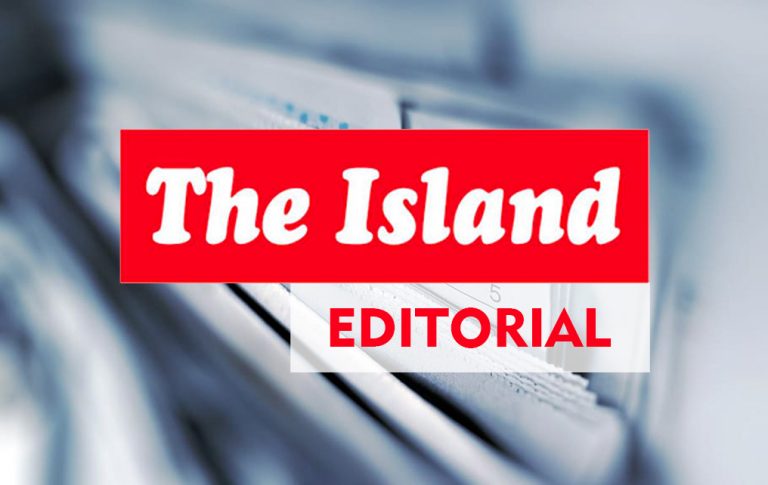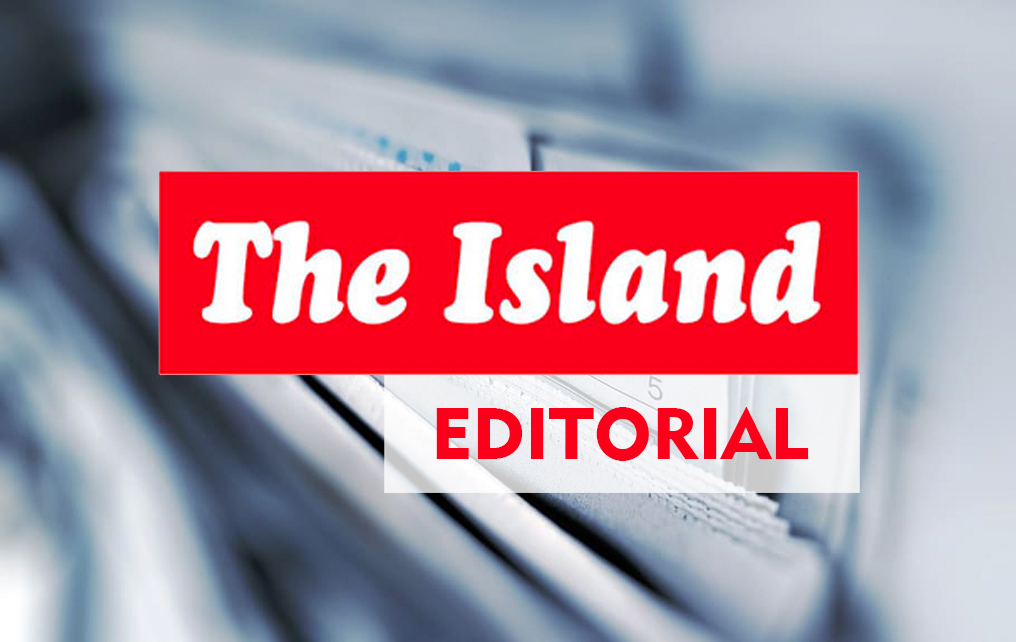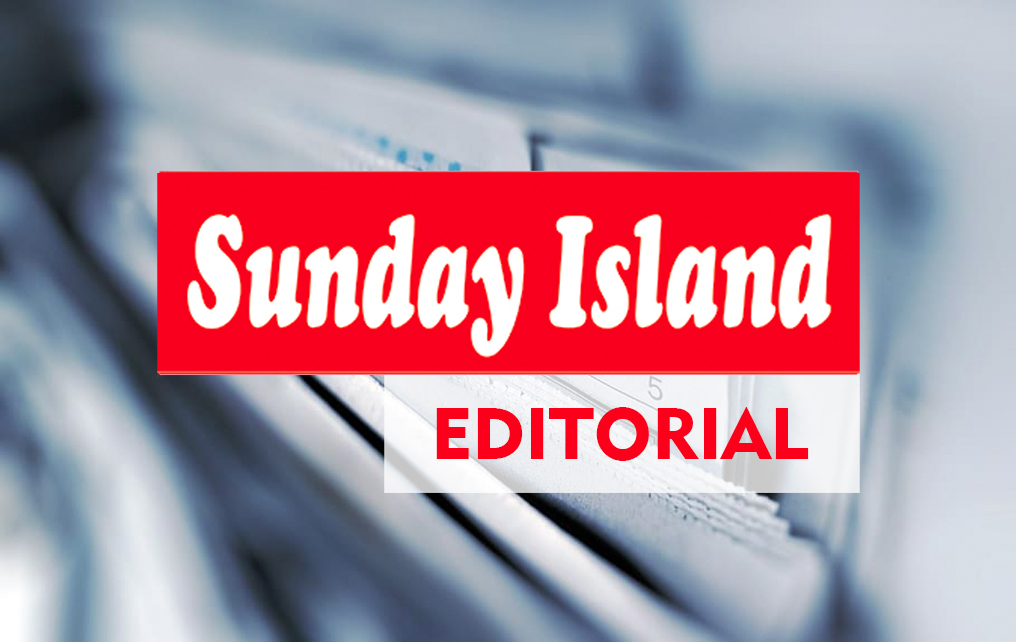Editorial
Squaring the circle
Tuesday 11th August, 2020
The Cabinet of the newly elected SLPP government is scheduled to be appointed tomorrow. President Gotabaya Rajapaksa and Prime Minister Mahinda Rajapaksa must be having a hard time, selecting their ministers. There are many aspirants to the Cabinet although most of them do not measure up. Various factors come into play in the selection process, which is sure to leave many ambitious elements disappointed. With the President and the PM trying to square the circle, one need not be surprised if the swearing-in of the Cabinet happens to be postponed.
Time was when governments could appoint any number of ministers, and we had jumbo Cabinets as a result. Mahinda Rajapaksa was very generous with ministerial appointments when he was the President. He made even Mervyn Silva a minister! Thankfully, the appointment of jumbo Cabinets is no longer possible owing to the 19th Amendment.
We believe that even a 30-member Cabinet is too big for a small country like Sri Lanka. Ideally, the number of Cabinet ministers should be limited to 15 with an equal number of deputies. The Provincial Councils have 45 ministers. There are so many ministers maintained with public funds, but the President, who is without a single ministerial portfolio, has to meet people and solve their problems! In the run-up to the recently concluded general election, the President had to intervene to have even school playgrounds and roads rehabilitated.
The fact that the proportional representation system has given rise to political alliances consisting of numerous parties which demand ministerial posts is no excuse for burdening the public with large Cabinets. Most parties that secure ministerial posts by contesting as constituents of coalitions cannot win a single seat each, if they go it alone at elections.
The architects of the 19th Amendment betrayed their partiality to the yahapalana government when they introduced a constitutional provision for expanding the Cabinet in case of the formation of a national government. In so doing, they facilitated the coming together of the UNP and the UPFA. A national government is not possible under the present circumstances; the SLPP and the SJB will never opt for cohabitation, but speculation is rife in political circles that the government may seek to remove constitutional hurdles in its path by scrapping the 19th Amendment. This is a worrisome proposition.
The 19 Amendment has some flaws, which need to be rectified. The Constitutional Council became an appendage of the yahapalana government. It needs to be rendered independent. The President should be able to hold the Defence portfolio so that the country can effectively face threats to its national security. No one is better suited for the post than the head of state elected directly by the people. However, the 19th Amendment must not be deep-sixed.
Meanwhile, the political parties that have secured National List (NL) slots, save the SLPP, are in a dilemma. Unsuccessful candidates are trying to enter Parliament via the NL so much so that the gazetting of the NL MPs has been delayed. The SLPP acted wisely by making the NL appointments while the process of counting preferential votes was still underway. That way it prevented unsuccessful candidates from asking for NL seats. The credit for this clever move should go to SLPP strategist Basil Rajapaksa, who finalised all NL appointments immediately after the allocation of seats by the Election Commission. Other parties should have done likewise.
The practice of appointing defeated candidates to Parliament through the NL runs counter to democracy and, therefore, must be brought to an end. If unsuccessful candidates are allowed to enter Parliament, students who fail the GCE A/L should not be denied university admission. Under the yahapalana government, so many defeated candidates were appointed NL MPs that failures became the pillars of the legislature. A constitutional amendment is called for to prevent defeated candidates from securing NL seats.
Editorial
An election day thought

Tuesday 6th May, 2025
Elections to 339 local government (LG) institutions are set to take place today––at long last. The terms of the local councils, which were last elected in 2018, lapsed in 2022, but the then SLPP government extended them by one year. In 2023, President Ranil Wickremesinghe derailed the LG polls by refusing to allocate funds. A legal battle resulted in the Supreme Court ordering, last year, that the LG elections be held soon.
As many as 75,589 candidates are vying for 8,287 seats in local councils; there are 4,877 wards in all LG institutions. Having campaigned really hard, the main political parties claim to be confident of victory, but many councils are likely to be hung.
The LG polls are held under the mixed proportional system—60% of the councillors are elected on the ward basis under the first-past-the-post system; others are elected under the Proportional Representation system. The new electoral system has led to a two-fold increase in the number of local council members.
Sri Lanka has too many politicians and state employees, as is public knowledge. It is popularly said in this country that ‘if one kicks a wayside bush at random, more than a dozen politicians and state employees will jump out’. The ratio of state employees to citizens is 1:15. There are 225 MPs, 455 provincial councillors, and about 8,287 local council members. There is no fixed number of LG members; the number tends to increase due to the new electoral system, which allows for overhang seats––the LG members elected on the ward basis from a political party or an independent group in excess of its entitlement under the PR system.
It does not make sense to maintain so many elected people’s representatives at the national, provincial and grassroots levels.
The National List (NL), which provides for the appointment of 29 MPs on the basis of political parties’ or independent groups’ shares of the nationwide votes in parliamentary polls, has been abused all these years to appoint defeated candidates and others to Parliament. Some NL appointments even undermine the Constitution; political parties craftily use Section 64 (5) of the Parliamentary Elections Act No 1 of 1981, as amended in 1988, to fill NL vacancies which are engineered, in most cases, to circumvent Article 99A of the Constitution; thus, the persons of party leaders’ choice are appointed to Parliament via the NL. This sordid practice has severely eroded public trust in the electoral process. Successive governments have not cared to amend the Parliamentary Elections Act and the Constitution to prevent defeated candidates and others from being appointed as NL MPs, and therefore the NL mechanism should be done away with.
The Provincial Council (PC) system has become a white elephant, but successive governments have considered it a fait accompli due to Indian pressure. All nine PCs have functioned without elected representatives since 2017! Even the JVP, which is currently in power, as the main constituent of the NPP coalition, has bitten the bullet and chosen to ensure the perpetuation of the PC system, which it went all out to sabotage, albeit in vain, by unleashing mindless terror and destroying lives, in the late 1980s. Serious thought should be given to reducing the number of PC members.
The number of LG members must also be reduced drastically. Many local council wards can be merged, especially in urban areas.
There have been campaigns for controlling the populations of crop-raiding wild animals, such as monkeys. Curiously, no such effort has ever been made to reduce the number of people’s elected representatives, who cause far worse damage to the economy than all crop-depredating wildlife combined. The same goes for the ever-burgeoning public service, which has become a metaphor for inefficiency.
As for today’s election, every vote counts. Happy voting!
Editorial
Polls and power

Monday 5th May, 2025
The Election Commission (EC) has said that everything is ready for tomorrow’s local government (LG) polls. However, a trade union representing the Grama Niladharis (GNs), who play a crucial role in conducting elections, has complained that funds allocated for hiring generators to ensure an emergency power supply to counting centres, etc., are inadequate, and therefore those places may be left without back-up power systems tomorrow.
The GNs should not be held responsible if anything untoward happens in case of blackouts either due to technical defects or sabotage tomorrow, President of the United Grama Niladharis’ Association, Nanadana Ranasinghe, is reported to have said, demanding an explanation from the authorities concerned as to how such an emergency will be handled. He has asked whether they will use emergency lamps, candles or pandam (flambeaux) in the event of a power failure.
It is hoped that the government will not launch a witch-hunt against the GNs, and that the EC, etc., will act swiftly to solve the aforesaid problem. Nothing is so certain as power failures in this country, which experienced a countrywide power outage about three months ago.
We have witnessed numerous instances where governments led by the UNP and the SLFP resorted to barbaric violence and large-scale vote rigging to win elections; presidential polls in 1982 and 1988, under President J. R. Jayewardene’s watch, the 1989 parliamentary election under R. Premadasa’s presidency, and the 1999 North-Western Provincial Council election during President Chandrika Bandaranaike’s tenure stand out among them. The JVP has a history of trying to sabotage elections by unleashing mindless terror. In fact, it was the JVP’s terror campaign that enabled the then ruling UNP to stuff ballot boxes and win elections in 1988 and 1989.
Given Sri Lankan politicians’ tendency to manipulate elections, the possibility of governments resorting to electoral frauds to retain their hold on power in the future cannot be ruled out. Hence the pressing need for the EC to ensure that nothing is left to chance in its efforts to ensure free and fair elections.
One may recall that a power failure helped the UNP win a fiercely contested election in the early 1980s. President Jayewardene scrapped a general election which was due in 1982, for fear of losing his five-sixths majority in Parliament; he held a heavily-rigged referendum instead, undertaking to hold by-elections in the electorates where his government would lose. He had to hold 18 such by-elections in 1983; four of them were won by the Opposition in spite of large-scale rigging and violence unleashed by the UNP. Dinesh Gunawardena, Anil Moonesinghe, Richard Pathirana and Amarasiri Dodangoda won the Maharagama, Matugama, Akmeemana and Baddegama electorates, respectively. Violence and rigging enabled the UNP to win the other electorates, especially Mahara.
In Mahara, at the conclusion of the first round of counting, it became clear that SLFP candidate Vijaya Kumaratunga had won, but the UNP insisted on recounts, and then there occurred a blackout. When power was restored, UNP candidate Kamalawarna Jayakody had beaten Kumaratunga! The Opposition counting agents claimed that some election officials loyal to the UNP had literally swallowed dozens of votes polled by Vijaya, who had survived an attempt by the UNP to kill him in the run-up to the election.
Sri Lanka is no stranger to election malpractices although it has been free from them for some time. Anything is possible in high-stakes elections. It may be recalled that in 2020, the then US President Donald Trump claimed that his rivals had stolen America’s presidential election and engineered his defeat. So, a country like Sri Lanka has to take all possible precautions to ensure free and fair elections. Reliable back-up power systems must be available at all counting centres tomorrow.
History has a remarkable ability to repeat itself even after prolonged lapses; therein lies the rub. In a democracy, the integrity of elections must not be taken for granted. Constant vigilance is said to be the price of freedom.
Editorial
Rule of law takes hit on expressway

It is said that in times war laws fall silent. In Sri Lanka, this much-quoted Ciceronian aphorism seems to hold true even in peacetime when politicians in power, their family members and supporters happen to be on the wrong side of the law.
It was widely thought that last year’s regime change would bring about a radical change, and that unlike during past governments, the law would apply equally to everyone, but traffic laws apparently fell silent on the Southern Expressway on Thursday (01).
Some viral videos doing the rounds in the digital space show a large number of private buses transporting people to the NPP May Day rally in Colombo, unlawfully parked on the Southern Expressway, with the government supporters having lunch or strolling on a paved shoulder of the road.
It is a punishable offence for vehicles to stop in undesignated sections of expressways in non-emergency situations. Instances have been reported where people were fined or even prosecuted for doing so. The aforementioned videos show a highway patrol vehicle among the unlawfully parked buses, with the police personnel looking the other way. The culture of impunity seems to persist. No legal action had been taken against the errant drivers at the time of going to press. The police would have promptly ticketed them if they had been transporting Opposition supporters to a political rally. So much for the incumbent government’s pledge to restore the rule of law!
Some NPP politicians have sought to deny that the individuals seen in the videos are their supporters; if so, they should have the incident probed urgently. The registration numbers of the buses are clearly visible in the videos, or the vehicles and their drivers can be easily identified with the help of traffic camera footage. It is not difficult for the police to trace the errant drivers and passengers and take legal action against them if they care to do so.
Ordinary motorists who happen to violate traffic laws on an expressway invariably face heavy fines. The police must be made to explain why they did not take prompt action against the drivers of the buses and the political activists for the transgression at issue.
One of the main election promises of the ruling NPP was to ensure that everybody would be equal before the law in keeping with the cherished legal maxim—nemo est supra leges or no one is above the law. The NPP leaders, during their Opposition days, would flay their predecessors for violating traffic laws, among other things. They would condemn the VIP convoy security procedures, claiming that such measures worsened traffic congestion in urban areas and caused much inconvenience to the public. They promised a system change. But the status quo remains to all intents and purposes. The aforesaid video footage in circulation exemplifies a famous Orwellian paradox; are we to conclude that under the new dispensation all people are equal, but some people are ‘more equal’ than others?
Meanwhile, one may recall that the JVP leaders vehemently opposed the construction of the Southern Expressway, claiming that it was being built to transport malu ambulthiyal or the traditional ‘sour fish curry’ to the then ruling family all the way from Tangalle! Today, some NPP supporters stand accused of having eaten rice perhaps with malu ambulthiyal on the Southern Expressway in violation of traffic laws!
Unless stern action is taken against the bus drivers and the political activists who violated traffic laws on the Southern Expressway, others are likely to follow suit, making the highways as chaotic as other roads, some of which are partially closed for New Year festivals and bicycle races to be held much to the inconvenience of the public.
It will be interesting to see if the NPP government will practise what it preached to its predecessors about the rule of law, and direct the police to probe the expressway incident, which has tarnished its image, and taken the gloss off its successful May Day rally to some extent.
-

 Sports6 days ago
Sports6 days agoOTRFU Beach Tag Rugby Carnival on 24th May at Port City Colombo
-

 News5 days ago
News5 days agoRanil’s Chief Security Officer transferred to KKS
-

 Opinion3 days ago
Opinion3 days agoRemembering Dr. Samuel Mathew: A Heart that Healed Countless Lives
-

 Features6 days ago
Features6 days agoThe Broken Promise of the Lankan Cinema: Asoka & Swarna’s Thrilling-Melodrama – Part IV
-

 Features7 days ago
Features7 days agoTrump tariffs and their effect on world trade and economy with particular
-

 News6 days ago
News6 days agoRadisson Blu Hotel, Galadari Colombo appoints Marko Janssen as General Manager
-

 Business5 days ago
Business5 days agoCCPI in April 2025 signals a further easing of deflationary conditions
-

 Features6 days ago
Features6 days agoA piece of home at Sri Lankan Musical Night in Dubai












